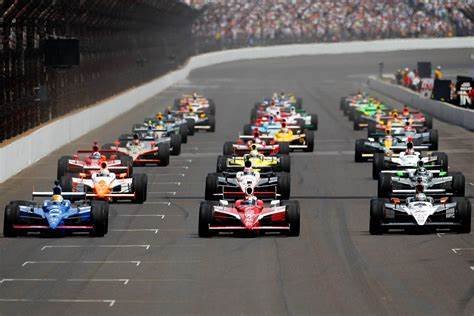The Paris-Dakar Rally, now known as the Dakar Rally, is one of the most grueling and iconic motorsport events in the world. First held in 1979, the rally traditionally traversed the rugged landscapes from Paris, France, to Dakar, Senegal, encompassing a diverse range of terrains, including deserts, mountains, and savannahs. Over the years, the Dakar Rally has evolved and adapted, relocating to South America and then to Saudi Arabia, but its influence on motorsports remains profound. Here’s a look at the significant impact the Paris-Dakar Rally has had on the world of motorsport.
- Culture of Adventure and Endurance
The Dakar Rally epitomizes adventure and endurance, pushing the limits of human and machine alike. The very essence of the event showcases the spirit of exploration, attracting not only professional drivers but also amateur enthusiasts. This culture has inspired many motorsport disciplines, leading to the emergence of similar endurance events that focus on off-road and rally challenges.
Key Takeaway:
– The Paris-Dakar Rally has fostered a spirit of adventure in motorsport, encouraging the organization of other long-distance endurance events globally.
- Advancements in Vehicle Technology
The challenging conditions of the Dakar Rally have driven significant technological advancements in off-road vehicles. Manufacturers invest heavily in research and development to create robust, high-performance machines capable of surviving extreme terrains and conditions. Innovations in suspension systems, traction control, navigation technology, and aerodynamics have originated from the demands of the rally.
Key Takeaway:
– The rally has led to technological breakthroughs that have not only advanced the vehicles used in the event itself but also influenced commercial off-road vehicles and rally cars.
- Emphasis on Navigation and Strategy
Unlike traditional motorsport events where drivers may rely heavily on a pre-determined course, the Dakar Rally emphasizes navigation through sometimes unmarked terrain or challenging conditions. The use of roadbooks, GPS devices, and navigators has made strategic thinking and adaptability crucial for competitors. This focus on navigational skills has highlighted the importance of co-drivers and navigators, leading to greater recognition of their role within the sport.
Key Takeaway:
– The intricacies of navigation have transformed driving strategies within motorsport, with racers increasingly focusing on planning and adaptability.
- Integration of Diverse Vehicle Classes
The Dakar Rally has opened doors for various vehicle classes, allowing not only cars but also trucks, motorcycles, and quads to compete in the same event. This inclusivity has broadened the appeal of the rally, drawing different manufacturers and teams from across the automotive world. The diverse competition has enriched the motorsport landscape while fostering innovations tailored to specific vehicle types.
Key Takeaway:
– The inclusion of multiple vehicle categories has diversified the competition and attracted a wider range of participants and spectators.
- Global Popularity and Cultural Impact
Originally conceived as a European event taking place primarily within the confines of the continent, the Dakar Rally has grown into a global phenomenon. The rally’s reputation for toughness and challenge has garnered widespread media attention and has become a celebrated cultural event, drawing prominent media coverage and creating a loyal fan base around the world.
Key Takeaway:
– The commercial success and global reach of the Dakar Rally have influenced how motorsport events are marketed, transforming them into high-profile entertainment spectacles.
- Inspiration for Aspiring Drivers
The Dakar Rally has served as a platform for many aspiring motorsport drivers to showcase their talent and fulfill their ambitions. The accessibility of entry-level categories within the rally provides opportunities for amateurs to compete alongside seasoned professionals, inspiring a new generation of racers and adventure seekers.
Key Takeaway:
– The event has created pathways for grassroots motorsport, enabling talents from varied backgrounds to aspire to higher levels within the racing community.
- Focus on Safety and Sustainability
As with many motorsport events, the Dakar Rally has faced its share of challenges regarding safety and environmental sustainability. Over the decades, organizers have made significant strides in enhancing safety regulations for competitors while promoting sustainable practices during the rally, such as minimizing the ecological footprint through vehicle requirements and operational strategies.
Key Takeaway:
– The rally’s evolution has stimulated discussions around safety protocols and environmental responsibility within all forms of motorsport.
Conclusion
The Paris-Dakar Rally has left an indelible mark on the world of motorsport. By cultivating a culture of endurance, driving technological advancements, emphasizing navigation and strategy, and promoting inclusivity, the rally has not only shaped off-road racing but also influenced various facets of motorsport as a whole. As the Dakar Rally continues to adapt and grow in new locations and formats, its legacy as a premier endurance rally and its impact on the motorsport landscape will undoubtedly endure for generations to come.










